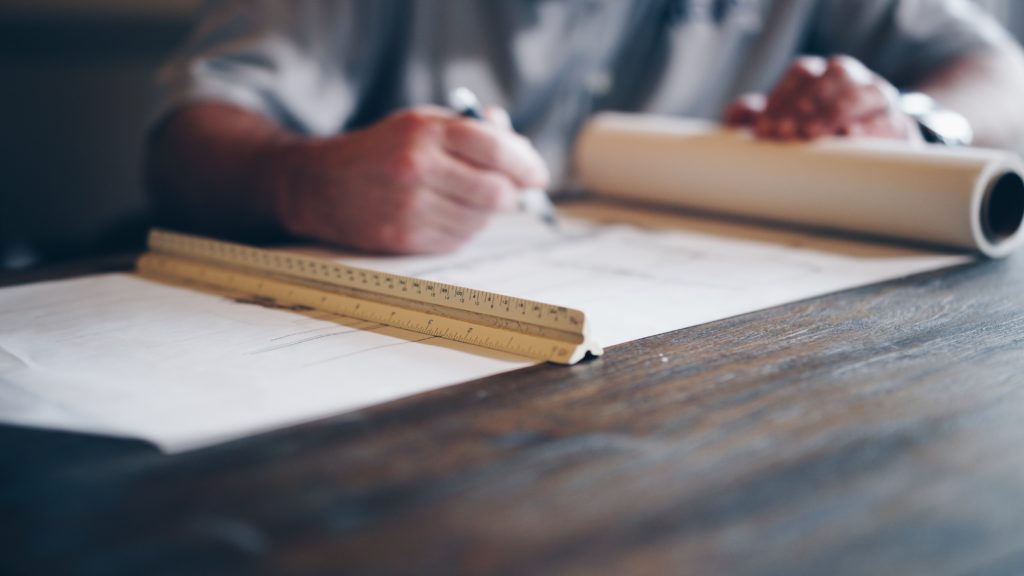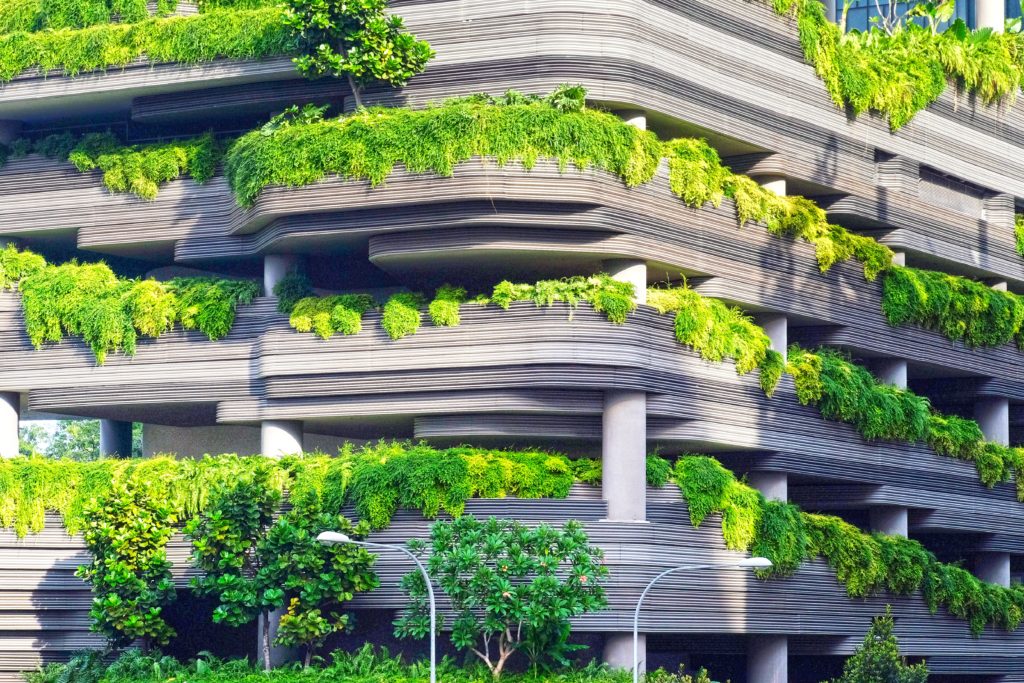Globalisation, automation and rapidly changing needs mean the future of employment will probably look very different to now. In fact, many current careers won’t exist in the next 10 to 20 years. So, it’s critical that students ask the important question: ‘Will my chosen study path lead to strong job opportunities after graduation and beyond?’
In this series, we’re exploring a range of occupations forecast to have strong employment prospects in the future. Some careers in the tech industry are quickly emerging. Plus, there are other existing careers that will also have an important place in the employment opportunities of tomorrow.
That’s why we wanted to explore the growing field of sustainable building design. As natural resources become increasingly scarce, the development of new buildings needs to adapt. Right now, the prospect of climate change and a growing global population are driving innovation in the architecture and construction sector to make it more sustainable. Through design choices, sustainable building design professionals can reduce waste, as well as the amount of energy required to keep a household running.
The World Commission on Environment and Development defines sustainability as “a form of development that meets the needs of the present without compromising the ability of future generations to meet their own needs”. If you’ve always dreamed of making a difference to both the planet and people’s everyday lives, a career in sustainable building design could be right for you.
What is sustainable building design?
Architects need to take into account a range of factors that contribute to the sustainability of a building during the design phase. Features like double-glazed windows, roof vents and window shading can regulate the building’s temperature, meaning less electricity is used for heating and cooling. Solar hot water systems can also reduce energy use, and intelligent landscaping can require less watering and maintenance.
There are also social aspects to building sustainability, like maximising residents’ health and safety using high levels of ventilation and natural light and avoiding poisonous or hazardous materials. A building that is designed with sustainability in mind will also have lower long-term running and maintenance costs. During construction, sustainable builders use recycled materials, prioritise cost-effectiveness, and avoid landscape destruction and pollution.
Some of these considerations are legally mandated in Australia through the energy-efficiency requirements of the Building Code of Australia (BCA). Other areas of sustainability, however, are being developed by clients, architects and builders with a passion for future-proof design.
What opportunities are available?
The ‘green’ building industry in Australia is one of the most advanced in the world. Because of Australia’s large size and low population density, as well as the extreme weather conditions, sustainable design jobs are expected to boom in the coming years across both the residential and commercial sectors. Career options in the field include:
- Architect
- Architectural Drafter
- Consultant
- Project Manager
- Interior Designer
- Surveyor
- Builder

Why work in sustainable building design?
Sustainable building design is a practical, hands-on way to help society grow in response to our changing environment. But is it the right career for you?
Build a dynamic career
Especially in Australia, green design experts are forecasted to be in high demand in the next couple of years. The World Green Building Trends 2018 SmartMarket Report found that 94 per cent of Australian respondents were involved in green building projects.
Be at the forefront of innovation
Over the next few decades, all buildings will need to become sustainable out of necessity. By starting your career in green design now, you’ll give yourself a headstart on the technology and innovations that will be required to make this transition. If you’re the type of person who loves to solve complex problems, the sustainable building design industry could use your creativity to figure out where and how we should live.
Help fight climate change
The biggest drawcard for those interested in sustainable building design is often the contribution they can make to confronting the threat of climate change. As a sustainable architect or builder, you will go to work every day knowing you are making a difference by helping communities reduce their greenhouse gas emissions now and into the future. What could be more satisfying than that?
Future-proof your community
For international students, green design skills can be a valuable tool to help protect people around the world from extreme weather events. While Australia is one of the countries likely to experience dramatic impacts if climate change continues to worsen, other parts of the Pacific, Africa and Asia are also predicted to suffer disproportionately. Sustainable design can provide techniques to create more resilient buildings and safer communities.
Education pathways
Green design professionals often combine tertiary education with practical experience through internships and entry-level jobs, before delving deeper into postgraduate qualifications. A course like the Diploma of Building Design at TAFE International Western Australia is a great starting point for students looking to get a foot in the door of this fast-growing industry.
This course builds on the knowledge acquired in the Certificate IV in Residential Drafting, also offered at TAFE, providing more drafting and design experience in ArchiCAD and Revit software. It focuses on residential and small-scale building projects, highlighting the principles of energy-efficient design and sustainability.
Student story

Flavia Godoy Azevedo moved to Perth to study Building Design at North Metropolitan TAFE. She had already graduated with a degree in Architecture in her home country of Brazil, but her job prospects there were restricted by politics and corruption in the building industry. Her brother-in-law had lived in Western Australia and told her it was relaxed and beautiful, so she decided it was time for a change.
“I went to uni in São Paulo, which is a huge city with a lot of people, stress and traffic, so I came to Perth to slow down a little bit,” she says. “I decided to start at TAFE because it was a good school, and instead of studying English, I thought I could learn something in my career area at the same time as I improve my language skills.”
Now, she lives within walking distance of TAFE and is completing a Certificate IV in Residential Building Drafting. She also works at a landscape architecture firm, where she is able to apply her sustainable design skills.
“TAFE is more practical than uni; it’s really straightforward and you learn what people do every day in that career. In all the classes, there was always something about sustainability. At work, for example, we think a lot about the stormwater and how they build parks, considering all the problems that could come up. In Brazil, we don’t have that, so it’s really interesting.”
Her time in Perth has turned her into a lover of the outdoors, and she often spends time in Kings Park or having a picnic at the beach. But her biggest lesson has been sharing the culture of her fellow students at TAFE.
“Here, there are a lot of international students, so it’s good to learn about other cultures and how people live in their home countries. My class had a lot of Australians and people from overseas, so I enjoyed getting to know them.”
Want to study for a career in sustainable building design?
A Diploma of Building Design from TAFE will set you up for a successful career in sustainability. All TAFE courses are backed by the Australian Government, meaning your qualifications will be nationally recognised. If you hope to study building design at university in the future, TAFE courses can also often be counted as credit towards your degree.
TAFE aims to give students experience in real-work environments through placements and access to lecturers who are experts in sustainable design. Plus, it is one of the more affordable options for continuing education in Australia. If a career in green design sounds like something you’d be interested in, you can find out more on the TAFE International Western Australia website.





